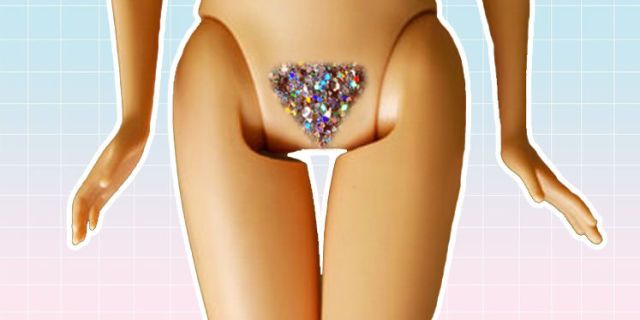Sexual Health
Syphilis: It Still Exists and Infections are Rising
Until the mid 20th Century, Syphilis was one of the most common diseases in Europe and North America. Since the discovery of Penicillin syphilis has dropped from the public eye, and until recently, the public consciousness. Unfortunately, Syphilis is back and many people aren’t getting tested for it. When I brought up the need for routine syphilis testing in a recent class discussion, a few of my students responded smugly with “Why? I think we’d know if we had syphilis”.
Further discussion with the students proved what I had suspected. They had a beginning understanding of the more common viral infections: HIV, Herpes, and the Human Papilloma Virus (HPV) and also they knew that Syphilis was a bacterial infection like Chlamydia and Gonorrhea. However, this was as far as they got before things went downhill. “No one has syphilis anymore” they declared. “Besides” a young man announced, “once it feels like you’re pissing razor blades, you know it’s time to get tested.”
It is here that the record needs to be set straight: Syphilis does still exist and its symptoms can be very hard to recognize. So hard in fact, that many people aren’t getting tested and remain undiagnosed. If it goes too long undiagnosed, the virus can damage internal organs and lead to death.
The Great Imitator
Syphilis has been called “the great imitator” because symptoms can vary from person to person and surprisingly, some people may not even have any symptoms at all. Historical figures who have been diagnosed with syphilis include Beethoven, Hitler, Tolstoy, and Christopher Columbus (blamed by some for the global spread of syphilis).
Syphilis: A Crash Course
As I said earlier, Syphilis is a bacterial infection. As a result, if caught early enough, it can be cured with Penicillin. Currently, according to the Center for Disease Control (CDC) the highest infection rates of syphilis are in urban environments and among men who have sex with men. While syphilis infections are growing the fastest in the gay community, infections are also up in heterosexuals as well.
What You Need To Know
Syphilis is passed from person to person with direct contact with a syphilis sore. While sores are most common on the external genitals, vagina, anus, or in the rectum, they can also be found on the lips or in the mouth. You may think you’d know if you had a sore, but the sores from syphilis, also known as a chancre, are painless and can be easily missed. A missed painless chancre means higher risk of syphilis transmission.
Coming in contact with the chancre spreads syphilis. You cannot get it from toilet seats, hot tubs, bathtubs, clothing, or sharing utensils. You have to have skin-to-skin contact. Syphilis can also be transmitted from a mother to her fetus and can lead to congenital syphilis. This is why expecting mothers are screened for syphilis during their prenatal visits with their Obstetricians.
Symptoms
As I have hopefully made clear, many people infected with syphilis may not show symptoms for years.
Yes, I said years! There are 3 stages of a syphilis infection and there are symptoms that correspond to each stage.
Primary Stage:
The time between infection and the first symptom can be between 10 and 90 days. The main symptom of the primary stage of syphilis is the actual sore, chancre, which appears at the spot where syphilis entered the body. Sometimes syphilis enters the body in multiple sites, resulting in multiple chancres. The Chancre usually last 3 to 6 weeks and heal on its own. If the primary stage goes undiagnosed and treated, then it moves into the next stage.
Secondary Stage:
The symptoms of this stage include skin rashes and mucus membrane lesions. The rash could be in one or more areas of the body (sometimes palms of hands or feet), and usually does not itch. The rash could also occur as the chancre is healing or several weeks afterwards. In addition to rashes, the infected person may experience sore throat, fever, patchy hair loss, fatigue, weight loss, and muscle aches and pain. Like the Primary stage, these symptoms will eventually resolve with or without treatment. If left untreated in this stage then the infected person goes into the latent phase of infection.
Latent Phase:
The Latent phase of syphilis is sometimes called the “hidden” phase. At this point, the symptoms have gone away but the infection is still in the body and begins to impact your internal organs and nervous system. This stage can last for years and can appear as late as 20 years after initial infection! It is in this stage that it starts to destroy the body. It begins to destroy the brain, nerves, eyes, blood vessels, liver, bones, and joints. It is also responsible for gradual blindness, paralysis, and dementia.
Diagnosis
While your health care provider may be able to diagnose syphilis from taking a sample of your chancre (providing you know you have it), syphilis is most often diagnosed through a blood test. If you have syphilis, your body will make syphilis antibodies that can be found in the blood.
Treatment
If diagnosed early, a single intramuscular injection of penicillin should be able to cure the infection. Later stages of syphilis usually require an intravenous injection, with the antibiotic being continually injected into your body for several days.
Reoccurrence and Risk Reduction
Syphilis is a bacterial infection which means that just because you have been diagnosed and treated for it once does not mean that you are immune to the disease. This means that if you engage in sexual activity with a person with syphilis then you can be infected again. The only 100 percent way to prevent a sexually transmitted infection is abstinence. As responsible sexually active adults in consenting relationships, prevention of any sexually transmitted infection is really about risk reduction. Whether it’s syphilis, herpes, HIV, or something else, you want to:
- Make sure you get tested regularly and know your status
- Have continuous and open communication with your partner
- Continue to educate yourself about symptoms and transmission
- Use condoms and other barriers such as dental dams when engaging in high risk behaviors
- Try not to have sex while under the influence of alcohol and other drugs
- Communicate! Communicate! Communicate!
Parting Thoughts
While the invention of Penicillin provided a cure for syphilis, infections still exist and are now on the rise. The more you know about syphilis and other sexually transmitted infections the easier it is for you to manage the risk of infection and transmission. Like all other STIs, syphilis is an infection. Infections are NOT judgments on who you are. Contracting syphilis, or any other STI, doesn’t make you a bad person. Part of being a mature and responsible adult means making healthy choices. Since symptoms are easy to miss, getting a full STI screening that includes syphilis, IS the responsible choice. To the students in my recent class discussion and everyone else who thinks syphilis isn’t relevant: Yes, people still get syphilis and chances are you don’t know you have it until it’s too late.









